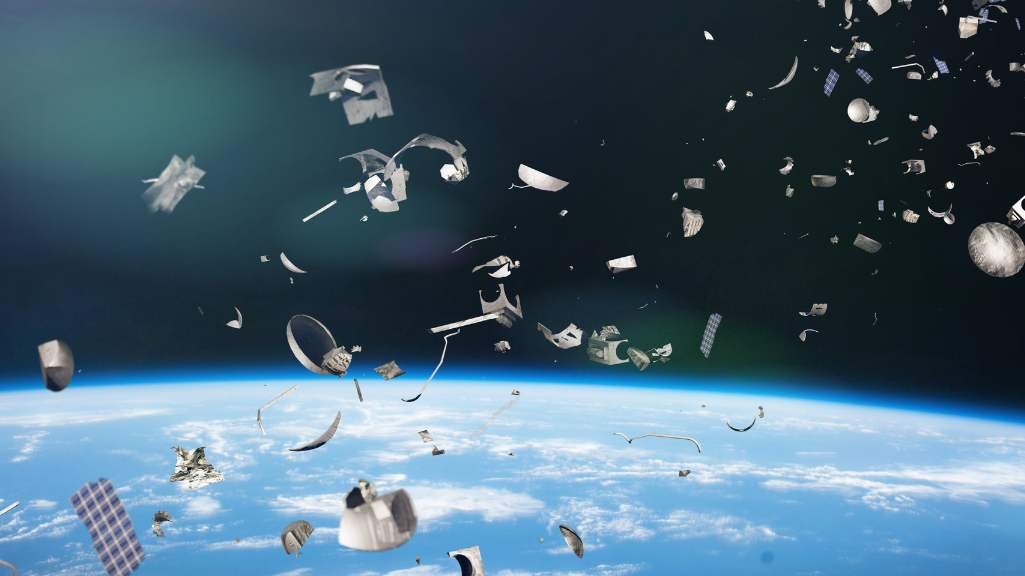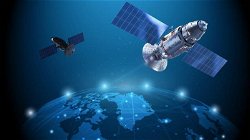Clearing Space Junk: Methods and Risks
Aaron Alston
. 2 min read
Any piece of machinery or other debris left in space by humans is referred to as "space junk" or "space debris." It can refer to large objects such as dead satellites that have either failed to complete their mission or have been abandoned in orbit after it has been completed. There are approximately 2,000 operational satellites currently orbiting the Earth, but there are an additional 3,000 defunct satellites scattered throughout space. They are exploring technologies such as advanced tracking systems, orbital debris removal missions, and even video chat-based collaboration among space agencies to coordinate efforts in cleaning up space debris and ensuring the safety of future space missions.

Why is it Important to Clean up Space Debris?
The presence of space debris is unsettling for a variety of reasons, the most obvious of which is the risk of collisions with other objects. The incredible speed at which space debris typically travels amplifies any potential danger that may be caused by it. The problem of junk in space presents additional difficulties. The astronomical community laments the fact that light pollution caused by objects in orbit makes it difficult to observe the night sky.
1. Giant Lasers
Plasma jets created by high-powered pulsed lasers based on Earth could be used to cause space debris to slightly slow down, after which the debris could re-enter the atmosphere and either burn up or fall into the ocean, depending on which scenario occurred first." Laser Orbital Debris Removal (LODR) is the name of the method, and it wouldn't require the creation of any new technology.
2. Balloons in Outer Space
The presence of dead satellites in orbit can be dangerous for other spacecraft. In 2009, one of them accidentally wandered into the path of a satellite that was still operational, which resulted in the destruction of both crafts and the creation of thousands of new pieces of space junk. This will reduce the risk of collisions between satellites. But in order to do this, you need to launch them with additional fuel, which adds mass and raises the cost of the launch.
3. Satellites that Destroy Themselves to Clean the Spacecraft
According to the scientists, developing new technology to address these three significant issues is necessary in order to build the satellite. The first problem has to do with the satellite's trajectory; it needs to be able to change its course so that it follows the same path as its intended destination. EPFL has stated that its research facilities are looking into developing a new ultra-compact motor that is capable of doing this.
4. WALL-E Will Be Responsible for Cleaning Up Space Debris
Tracking space debris with a diameter of more than ten centimeters, as is the case with VESPA, is typically done from the ground using radar technology and, in some cases, telescopes. Using these observations, engineers are able to calculate the orbits that the objects occupy and link them to particular satellites or collisions in order to catalogue them in a database.
5. Microdots in orbit is suggested as a potential solution to the problem of debris in space
In theory, releasing a couple of tens of tons of tungsten dust with a particle size of 30 um into low earth orbit on a trajectory that is antithetical to that of the space debris being targeted would be sufficient to slow space debris with a size less than 10 cm. The slowed debris would decay into a lower orbit, where it would be expected to fall into the earth's atmosphere within a couple of decades.
Conclusion
Space debris is a significant problem that poses a risk to operational satellites and other objects in orbit, as well as making it difficult to observe the night sky. Several methods have been proposed to address this issue, including using giant lasers to slow down debris, launching balloons to capture dead satellites, developing satellites that can destroy themselves, using tracking systems to catalogue debris, and releasing microdots to slow debris and force it to decay into a lower orbit.
More Stories from
Recent Developments in Space Exploration: Discoveries and Missions
The article highlights recent developments in the field of space exploration, including the discovery of the largest comet.
Artificial Intelligence plays in Assisting Humanity's Exploration of the Solar System
This article discusses the growing importance of artificial intelligence in various aspects of space exploration, including autonomous navigation.
Exploring the Final Frontier: A Glimpse into the World of Space Research
From probing distant galaxies with space telescopes to charting the potential for human life on other planets, this article provides a glimpse into the evolving field of space research.
Connected Cosmos: Embracing the Future of Space Exploration with Video Chat
Discover the potential for human colonization of other planets, breakthrough propulsion systems, and the expansion of our knowledge of the universe through space-based astronomy.
Chandrayaan-3: India's Ambitious Lunar Mission for Scientific Exploration
Chandrayaan-3, India's third lunar mission led by ISRO, aims to overcome past challenges and demonstrate soft landing capabilities on the Moon.








.png?width=40&aspect_ratio=1:1)


